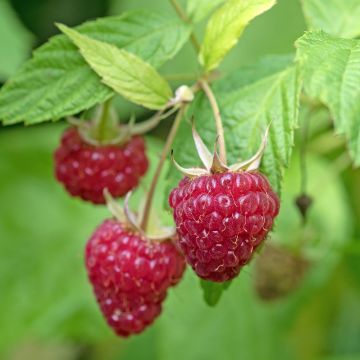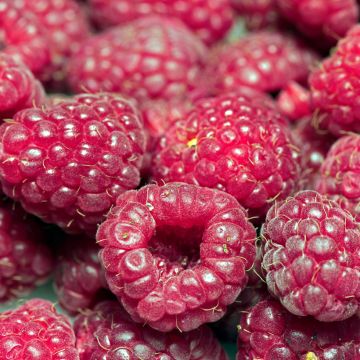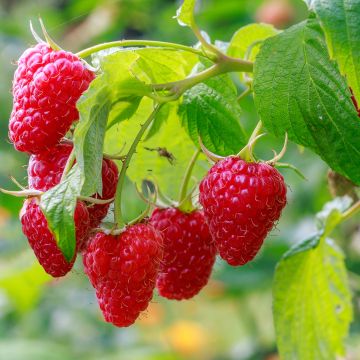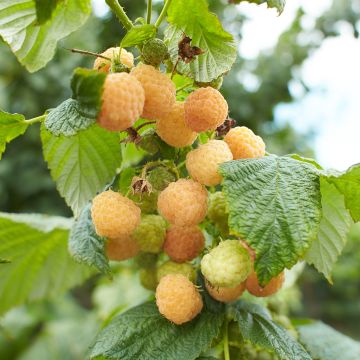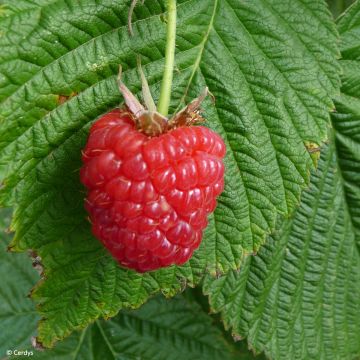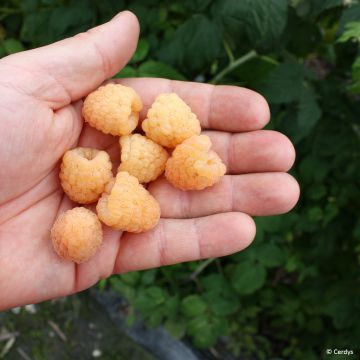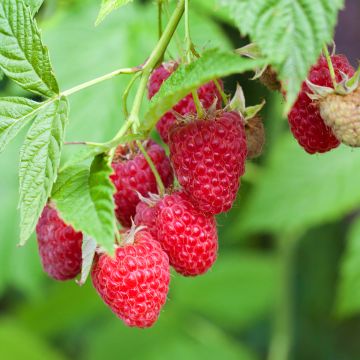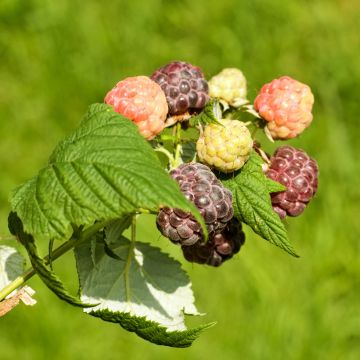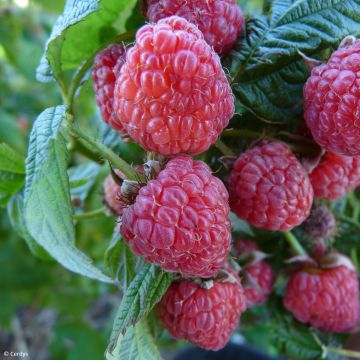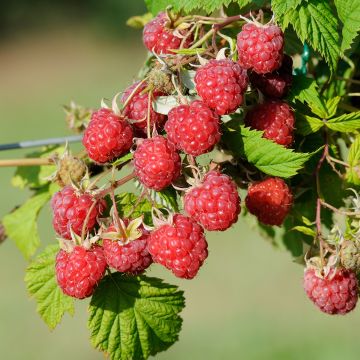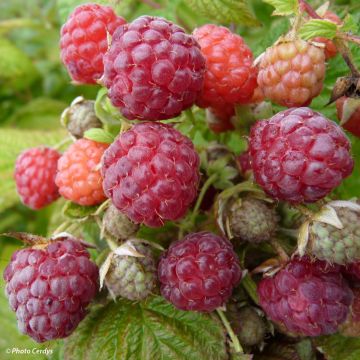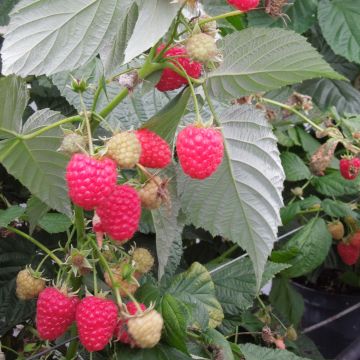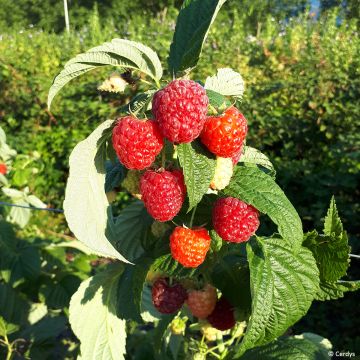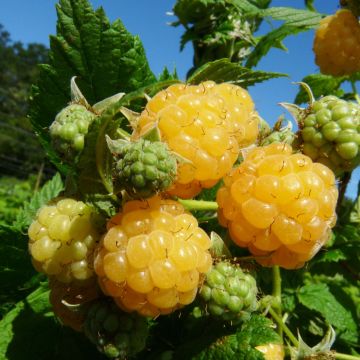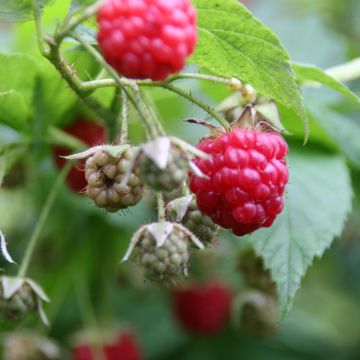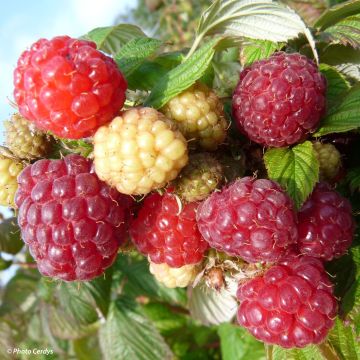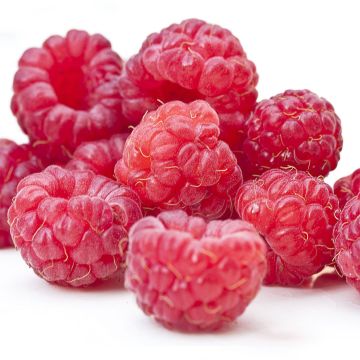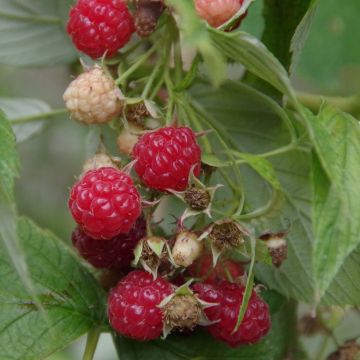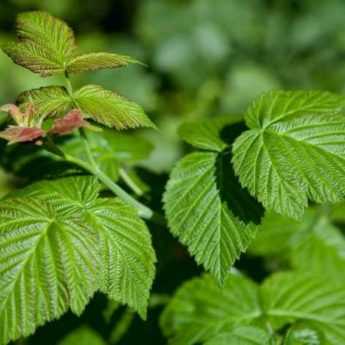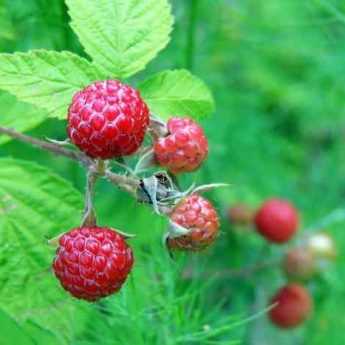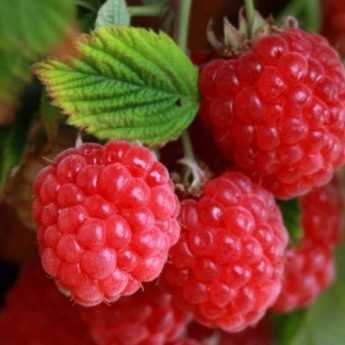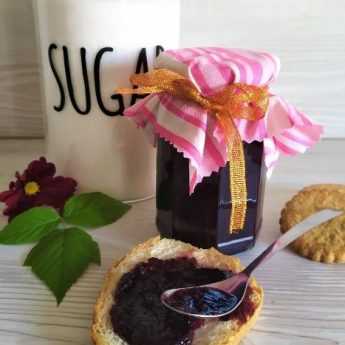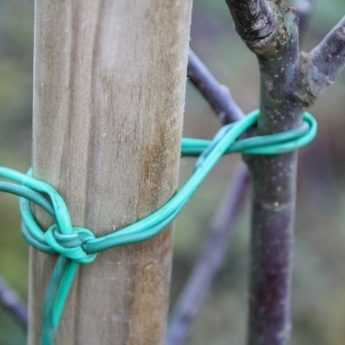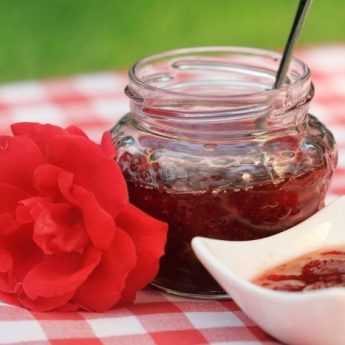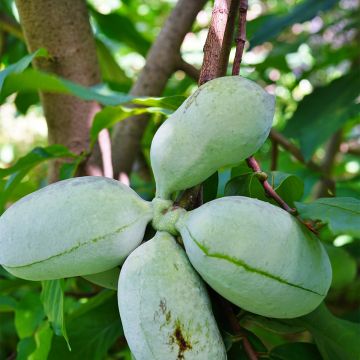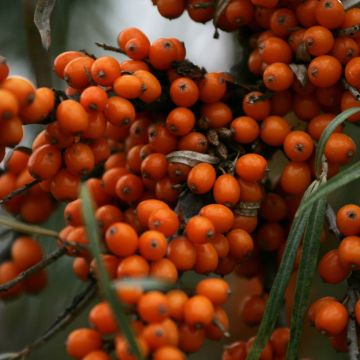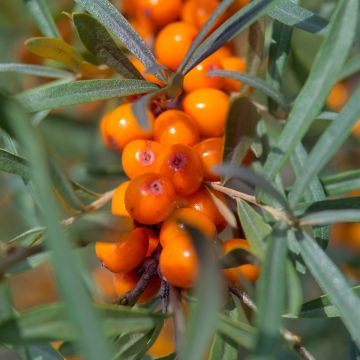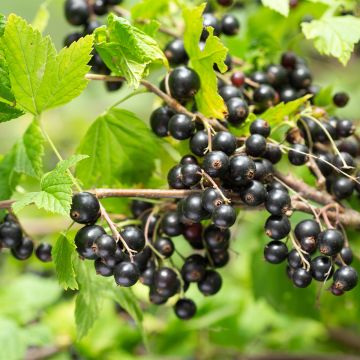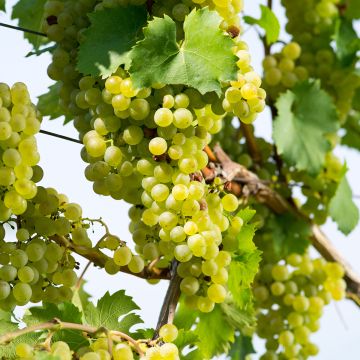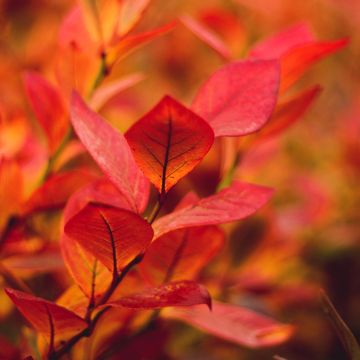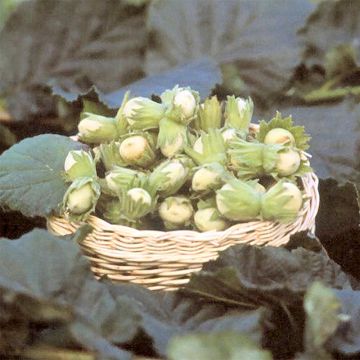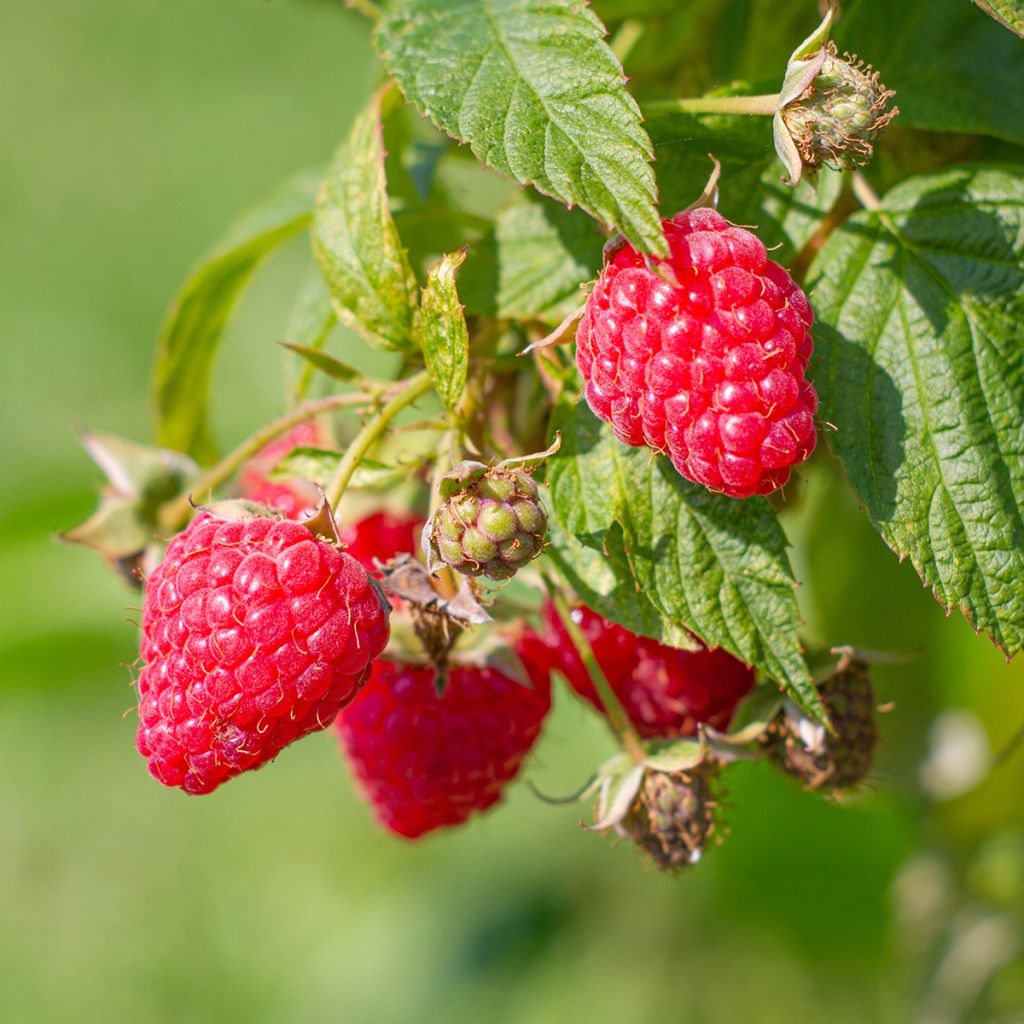

Organic Raspberry Malling Promise- Rubus idaeus
Organic Raspberry Malling Promise- Rubus idaeus
Rubus idaeus Malling promise
Raspberry, Red Raspberry, European Raspberry
Why not try an alternative variety in stock?
View all →This plant carries a 6 months recovery warranty
More information
We guarantee the quality of our plants for a full growing cycle, and will replace at our expense any plant that fails to recover under normal climatic and planting conditions.
Description
Rubus idaeus 'Malling Promise' is an old, early, non-perpetual, and very hardy variety (-20°C (-4°F)). The fruits are large, red, and fragrant. The harvest begins from mid-June and ends around mid-July. The raspberries are slightly pointed, about 2cm (1in) in diameter, and can weigh 10 grams. It is tolerant to mosaic viruses and is relatively resistant to drought. It likes deep, acidic soil that is rich in humus. It prefers a sunny to partially shaded location. It is a self-fertile variety that pollinates itself, but associating it with other raspberry varieties will increase production. This plant is organically grown.
Rubus idaeus belongs to the extensive Rosaceae family, like strawberries, brambles, and wild roses. It is native to temperate Europe and Asia (from Turkey to China and Japan) and has been cultivated since the Middle Ages. In its native habitat, it grows in the undergrowth with rowan trees, elderberry, and beech, with which it forms a symbiotic association. Optimal production starts from the third year after planting. The lifespan of the raspberry bush is about ten years. Two categories of raspberry bushes are distinguished: perpetual varieties, which provide production from July-August until frost, and non-perpetual varieties with abundant harvesting around June-July.
'Malling Promise' was obtained in 1966 at East Malling Research, a research station located in the county of Kent, England. It forms a bushy shrub, reaching a height of 1.5m (5ft) with a similar width. Its deciduous foliage is carried by upright stems, developing as a moderately suckering perennial stump. The canes are biennial, each one dying after fruiting. Every year, suckers emerge from its roots, forming new canes armed with small prickles that are not very sharp. Its leaves are green on the upper side, whitish-green and tomentose on the underside. In April-May, it bears white flowers, 1 to 2cm (1in) in diameter. They are grouped in a small bouquet of 10 to 12. The flowering is honey-rich. The fruits are formed by small agglutinated drupes, which are easy to detach when ripe.
'Malling Promise' is an early variety that produces an abundance of raspberries over a short period, which offers the advantage of a grouped harvest. The raspberries must be carefully picked. You can lightly wash them with water and they will keep better in the refrigerator. Eat the fruit freshly picked or turn them into sorbets, coulis, jams, crumble, puddings, and tarts. They are low in calories, but are rich in minerals (calcium, magnesium, iron), vitamin C and K, fibre and antioxidants.
Plant 'Malling Promise' alongside other varieties of small fruits. To extend the harvesting period and increase the diversity of colour and taste of raspberries, plant perpetual varieties nearby, such as the 'Zeva' Organic and 'Heritage' Organic, or varieties with colourful fruit, such as 'Golden Everest' Organic and 'Fall Gold'.
Report an error about the product description
Plant habit
Fruit
Flowering
Foliage
Botanical data
Rubus
idaeus
Malling promise
Rosaceae
Raspberry, Red Raspberry, European Raspberry
Cultivar or hybrid
Other Raspberry plants
View all →Planting and care
It prefers humus-rich soil that retains moisture, even in summer, without too much limestone. It appreciates partially shaded but bright exposures. In cool regions, it will tolerate sunlight well. In warmer and sunnier regions, it prefers partial shade. Plant it from October to March in ordinary soil enriched with compost and well-rotted manure.
Space the plants 100cm (39in) apart in rows that are 120cm (47in) apart. When planting, the collar should be level with the ground. It is wise to train them using wire stretched between stakes or on a trellis.
Water regularly to encourage root development in the first year of planting. During periods of high heat or prolonged drought, provide additional water. Weed the surface, especially at the beginning of planting, and apply mulch to retain moisture in summer.
It can be susceptible to diseases if growing conditions are not optimal (raspberry anthracnose, raspberry rust, powdery mildew, grey mould during rainy periods, or Botrytis). The damage observed in cultivation is due to unfavourable weather conditions, especially during cold springs that allow micro-fungi present in the soil to infest the vegetation. To protect the bushes, it is recommended to fertilise them with organic fertilisers that encourage anaerobic bacteria to multiply in the soil, which strengthens the soil's ability to stimulate the plants' immune system. Raspberry bushes can also be attacked by parasites, such as raspberry worms, the larvae of a small beetle that lodges in the fruits, without causing significant damage.
Raspberry bushes can easily multiply through suckers that grow near the base: remove them and replant them in another part of the garden, if desired.
Planting period
Intended location
Care
Planting & care advice
This item has not been reviewed yet - be the first to leave a review about it.
Similar products
Haven't found what you were looking for?
Hardiness is the lowest winter temperature a plant can endure without suffering serious damage or even dying. However, hardiness is affected by location (a sheltered area, such as a patio), protection (winter cover) and soil type (hardiness is improved by well-drained soil).

Photo Sharing Terms & Conditions
In order to encourage gardeners to interact and share their experiences, Promesse de fleurs offers various media enabling content to be uploaded onto its Site - in particular via the ‘Photo sharing’ module.
The User agrees to refrain from:
- Posting any content that is illegal, prejudicial, insulting, racist, inciteful to hatred, revisionist, contrary to public decency, that infringes on privacy or on the privacy rights of third parties, in particular the publicity rights of persons and goods, intellectual property rights, or the right to privacy.
- Submitting content on behalf of a third party;
- Impersonate the identity of a third party and/or publish any personal information about a third party;
In general, the User undertakes to refrain from any unethical behaviour.
All Content (in particular text, comments, files, images, photos, videos, creative works, etc.), which may be subject to property or intellectual property rights, image or other private rights, shall remain the property of the User, subject to the limited rights granted by the terms of the licence granted by Promesse de fleurs as stated below. Users are at liberty to publish or not to publish such Content on the Site, notably via the ‘Photo Sharing’ facility, and accept that this Content shall be made public and freely accessible, notably on the Internet.
Users further acknowledge, undertake to have ,and guarantee that they hold all necessary rights and permissions to publish such material on the Site, in particular with regard to the legislation in force pertaining to any privacy, property, intellectual property, image, or contractual rights, or rights of any other nature. By publishing such Content on the Site, Users acknowledge accepting full liability as publishers of the Content within the meaning of the law, and grant Promesse de fleurs, free of charge, an inclusive, worldwide licence for the said Content for the entire duration of its publication, including all reproduction, representation, up/downloading, displaying, performing, transmission, and storage rights.
Users also grant permission for their name to be linked to the Content and accept that this link may not always be made available.
By engaging in posting material, Users consent to their Content becoming automatically accessible on the Internet, in particular on other sites and/or blogs and/or web pages of the Promesse de fleurs site, including in particular social pages and the Promesse de fleurs catalogue.
Users may secure the removal of entrusted content free of charge by issuing a simple request via our contact form.
The flowering period indicated on our website applies to countries and regions located in USDA zone 8 (France, the United Kingdom, Ireland, the Netherlands, etc.)
It will vary according to where you live:
- In zones 9 to 10 (Italy, Spain, Greece, etc.), flowering will occur about 2 to 4 weeks earlier.
- In zones 6 to 7 (Germany, Poland, Slovenia, and lower mountainous regions), flowering will be delayed by 2 to 3 weeks.
- In zone 5 (Central Europe, Scandinavia), blooming will be delayed by 3 to 5 weeks.
In temperate climates, pruning of spring-flowering shrubs (forsythia, spireas, etc.) should be done just after flowering.
Pruning of summer-flowering shrubs (Indian Lilac, Perovskia, etc.) can be done in winter or spring.
In cold regions as well as with frost-sensitive plants, avoid pruning too early when severe frosts may still occur.
The planting period indicated on our website applies to countries and regions located in USDA zone 8 (France, United Kingdom, Ireland, Netherlands).
It will vary according to where you live:
- In Mediterranean zones (Marseille, Madrid, Milan, etc.), autumn and winter are the best planting periods.
- In continental zones (Strasbourg, Munich, Vienna, etc.), delay planting by 2 to 3 weeks in spring and bring it forward by 2 to 4 weeks in autumn.
- In mountainous regions (the Alps, Pyrenees, Carpathians, etc.), it is best to plant in late spring (May-June) or late summer (August-September).
The harvesting period indicated on our website applies to countries and regions in USDA zone 8 (France, England, Ireland, the Netherlands).
In colder areas (Scandinavia, Poland, Austria...) fruit and vegetable harvests are likely to be delayed by 3-4 weeks.
In warmer areas (Italy, Spain, Greece, etc.), harvesting will probably take place earlier, depending on weather conditions.
The sowing periods indicated on our website apply to countries and regions within USDA Zone 8 (France, UK, Ireland, Netherlands).
In colder areas (Scandinavia, Poland, Austria...), delay any outdoor sowing by 3-4 weeks, or sow under glass.
In warmer climes (Italy, Spain, Greece, etc.), bring outdoor sowing forward by a few weeks.



































